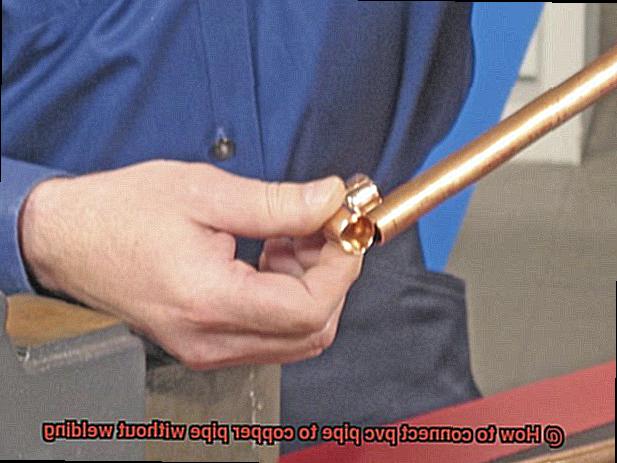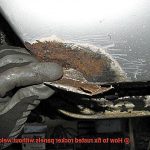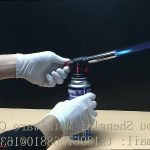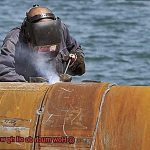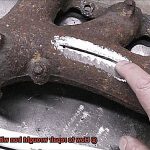Are you in the midst of a plumbing project and finding it difficult to connect PVC pipe to copper pipe without welding?
Don’t worry, we’ve got you covered. Joining two pipes of different materials can be a challenge, but there are plenty of options available to help you achieve a secure and long-lasting connection.
In this article, we’ll explore some of the most effective methods for connecting PVC pipe to copper pipe. From using push-fit fittings to compression fittings and beyond, we’ll show you how to join these two types of piping together with ease.
Firstly, let’s dive into why joining PVC and copper pipes can be tricky and why welding isn’t always an option. Then, we’ll walk you through each method step-by-step, discussing the pros and cons of each approach along the way.
We’ll also provide some helpful tips for achieving the best results possible. Whether you’re a seasoned DIY enthusiast or just starting out with plumbing projects, this article has everything you need to know about making a reliable connection between PVC pipe and copper pipe without welding.
So, grab your tools, put on your work gloves, and let’s get started.
What is Welding?
Contents
Welding is a fascinating process that involves heating two pieces of metal until they melt and then fusing them together.
Although it’s a popular method for connecting metal pipes, it may not be the ideal choice for connecting PVC and copper pipes. This is because welding requires high temperatures that can damage the PVC pipe, and the different melting points of the materials can make the process challenging and time-consuming.
Fortunately, there are alternative methods available for connecting PVC and copper pipes that are easier, safer, and more effective.
One option is to use compression fittings, which consist of a brass ring that fits on the copper pipe and a nut that screws onto the compression fitting.
The PVC pipe is then inserted into the compression fitting and tightened with the nut. It’s an easy-to-use method that doesn’t require specialized equipment or training.
Another option is to use push-fit connectors, which are specifically designed to be inserted into the end of a copper pipe and pushed onto the end of a PVC pipe. These connectors have a rubber seal inside that creates a watertight connection between the two pipes.
It’s an efficient method that provides a secure and long-lasting bond without requiring any tools or adhesives. When connecting PVC and copper pipes, it’s crucial to use a transition coupling that is specifically designed for this purpose.
These couplings are made with materials that are compatible with both copper and PVC, ensuring a secure and leak-free connection. It’s important to note that direct contact between PVC and copper can cause corrosion and other issues.
Therefore, it’s recommended to use an insulating material between the two pipes if they will be in prolonged contact.
While welding may not be the best option for connecting PVC and copper pipes, there are alternative methods available such as compression fittings, push-fit connectors, and transition couplings.
Compression Fitting Method
If you’re looking for an easy, hassle-free way to connect PVC and copper pipes without welding, the compression fitting method might just be the answer to your prayers.
This popular method involves using a compression fitting made up of three essential parts that work together seamlessly to create a tight seal around the joint between your pipes. Think of it like a well-coordinated dance, where each part knows its role and executes it to perfection.
The compression nut is like the lead dancer, gliding effortlessly onto the copper pipe. The compression ring follows closely behind, twirling into place with perfect grace.
The compression seat sweeps in to complete the routine, sealing everything in place like a pro. Using the compression fitting method is as easy as 1-2-3.
Start by measuring and cutting your pipes to the correct length, then slide on the compression nut and ring onto your copper pipe. Next, insert the end of your PVC pipe into the compression seat, making sure it’s pushed in all the way.
Finally, give everything a good tighten with a wrench until it’s snug and secure. It’s important to keep in mind that while this method can be effective for certain applications, it may not be suitable for high-pressure systems or applications that require a completely watertight seal.
To avoid any potential leaks or compatibility issues, always use a compression fitting that is specifically designed for use with both PVC and copper pipes. In conclusion, the compression fitting method is an excellent choice when you need to connect PVC and copper pipes without welding.
Push-Fit Fitting Method
Connecting PVC and copper pipes has never been easier than with the push-fit fitting method.
Whether you’re a seasoned DIYer or a newbie, this innovative method is straightforward and effective, making it one of the most popular ways to connect PVC and copper pipes. The push-fit fitting consists of two parts: the body and the locking ring.
To use this method, start by cleaning the ends of both pipes thoroughly to remove any dirt or debris. Next, slide the locking ring onto the end of the copper pipe, followed by the push-fit body.
Push the body onto the copper pipe until it reaches the locking ring.
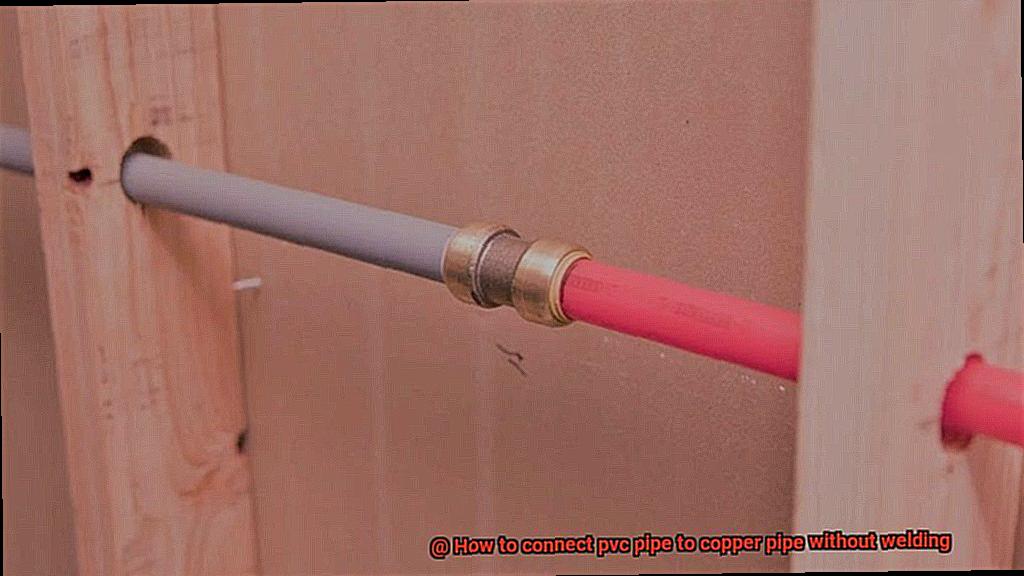
Once you’ve secured the body onto the copper pipe, slide the PVC pipe into the push-fit body until it stops.
The locking ring should now be positioned between the copper and PVC pipes.
Then, using pliers, push the locking ring up towards the push-fit body until it clicks into place.
Advantages
One of the main advantages of using push-fit fittings is that they are incredibly easy to install and don’t require any specialized tools or skills. Anyone can install them without hiring a professional, saving both time and money.
Plus, you won’t have to worry about dangerous fumes from welding or other safety hazards. However, like any method, push-fit fittings come with some disadvantages.
They may not be suitable for all applications and should only be used in accordance with manufacturer recommendations. Also, it’s essential to take care when installing them to ensure proper alignment and compatibility between the pipes and fitting material.
Transition Couplings
If you’re looking for a hassle-free way to connect PVC pipes to copper pipes, without the need for welding, then transition couplings are the answer to your prayers. These couplings are specially designed to accommodate the different sizes and materials of the two pipes, making it easy to create a secure and leak-proof connection.
With several types of transition couplings available, including compression fittings, push-fit fittings, and rubber couplings, you can choose the one that best suits your needs. Compression fittings are one of the most common types of transition couplings.
They use a nut and ferrule system to compress the coupling onto the pipes, creating a tight seal. Push-fit fittings are another type of transition coupling that require no tools or skills to install.
They simply push onto the pipes and lock in place, making installation a breeze. Rubber couplings are ideal when there is some misalignment between the two pipes.
These couplings use a flexible rubber sleeve that fits over both pipes and is tightened with stainless steel clamps, ensuring a secure connection. When selecting a transition coupling, it is essential to consider the size and material of both PVC and copper pipe.
Choosing an incompatible coupling can lead to leaks and other issues down the line. Therefore, it is crucial to follow manufacturer instructions closely for proper installation.
Whether you opt for compression fittings, push-fit fittings or rubber couplings, by selecting the appropriate coupling and following proper installation procedures, you can create a reliable and leak-free connection between the two pipes.
Dielectric Unions
These innovative fittings are designed to connect copper and PVC pipes without the risk of corrosion, ensuring a secure and long-lasting connection. To install a dielectric union, you’ll need to start by cutting the copper pipe to your desired length and cleaning the end with sandpaper or a wire brush.
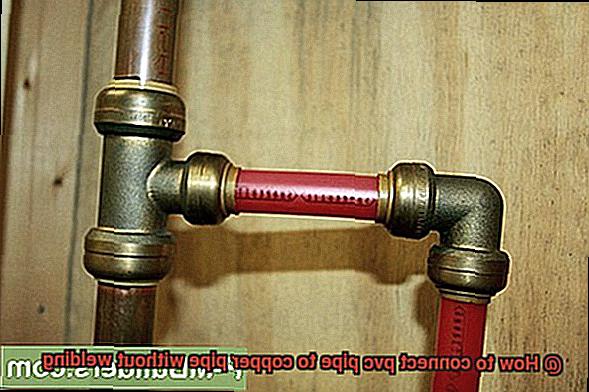
Then, apply flux to the end of the pipe and insert it into the copper half of the union. Once this is done, heat the joint with a propane torch until the flux melts and flows around the joint.
Finally, use a soldering iron to melt solder onto the joint, creating a strong bond between the copper pipe and the fitting. Now, let’s move on to connecting the PVC pipe to the other half of the dielectric union.
Begin by cutting the PVC pipe to size and deburring the cut end. Apply PVC primer to both parts, then apply PVC cement to both parts.
Insert the PVC pipe into the PVC half of the union and hold it in place for several seconds to allow the cement to dry. It’s important to remember that dielectric unions should not be used in high-pressure applications or with hot water systems.
They are best suited for low-pressure applications such as drainage systems where corrosion may be a concern. Additionally, it’s essential to ensure that any exposed metal parts are properly grounded to prevent electrical hazards.
Preventing Direct Contact Between Materials
When it comes to connecting PVC and copper pipes without welding, it’s important to prioritize safety and effectiveness.
One major consideration is the prevention of direct contact between the two materials. Why is this so essential?
Let’s explore the details.
Copper and PVC have distinct expansion rates and chemical properties.
If they come into direct contact, corrosion and leaks can occur over time. Not to mention, electrical currents passing between the two pipes can cause serious damage.
Using A Dielectric Union
One effective choice is using a dielectric union. This fitting has a plastic sleeve that separates the copper and PVC pipes, acting as an insulator.
By preventing electrical currents from passing between the two pipes, this union avoids any potential for damage. Dielectric unions are commonly used in plumbing applications to connect different types of metal pipes, but they work just as well with copper and PVC pipes.
A Brass Or Bronze Adapter
Another option is relying on a brass or bronze adapter with a rubber gasket. You can thread the adapter onto the copper pipe and glue the PVC pipe onto the other end of the adapter.
The rubber gasket creates a tight seal between the two pipes, which prevents any leaks or corrosion from occurring. It’s crucial to note that soldering or welding should never be used to directly connect PVC to copper.
This technique can cause the PVC to melt and release toxic fumes that are harmful to your health.
Additionally, soldering or welding can cause the copper to expand and contract over time, leading to leaks or damage.
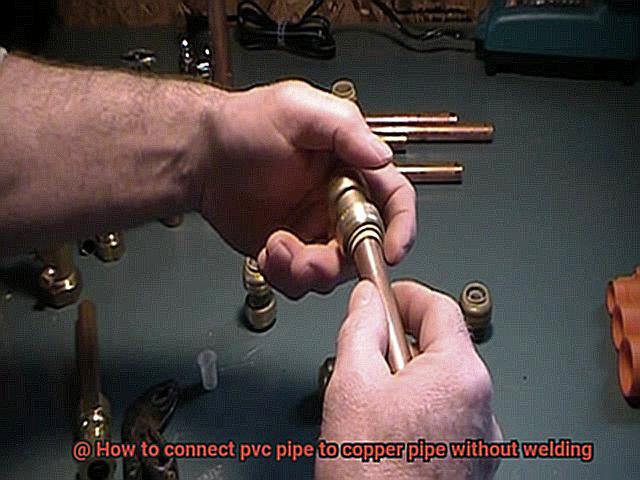
By utilizing dielectric unions or brass/bronze adapters with rubber gaskets, you can achieve a secure connection between the two pipes while avoiding any potential hazards down the road.
XMNNp1cZKTI” >
Conclusion
To sum up, connecting PVC pipes to copper pipes without welding can seem daunting at first.
However, there are several effective methods available that make the process easy and hassle-free. Welding is not always the best option since it requires high temperatures that can damage the PVC pipe.
Thankfully, transition couplings like compression fittings or push-fit connectors provide a secure and long-lasting bond without requiring any tools or adhesives. It’s crucial to use a coupling specifically designed for this purpose to avoid corrosion and other issues caused by direct contact between PVC and copper.
Dielectric unions are another innovative fitting designed to connect copper and PVC pipes without the risk of corrosion. However, they’re not suitable for high-pressure applications or hot water systems.
The key to connecting PVC and copper pipes is preventing direct contact between materials. Dielectric unions or brass/bronze adapters with rubber gaskets create a tight seal between the two pipes while avoiding potential hazards down the road.
By following proper installation procedures and understanding each method’s limitations, you can achieve a reliable connection between your pipes.
